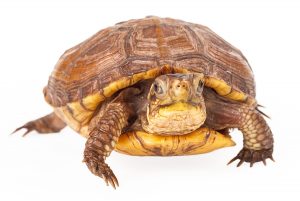 Mother Nature serves as an instructor, a classroom, a learning habitat and a nurturing environment on the Mesa Community College (MCC) Red Mountain campus, inspiring careers in Science, Technology, Engineering and Math (STEM).
Mother Nature serves as an instructor, a classroom, a learning habitat and a nurturing environment on the Mesa Community College (MCC) Red Mountain campus, inspiring careers in Science, Technology, Engineering and Math (STEM).
Centered around the Cienega, a refuge for endangered fish and native animals, the area offers a quiet place for students and community visitors to relax and view wildlife. Through partnerships with Arizona Game and Fish Department (AZGFD), U.S. Fish and Wildlife Service, the Phoenix Zoo and the Desert Botanical Garden, the Cienega is a dynamic learning environment where students have the opportunities to do conservation research, and to meet and network with those in science careers they might pursue.
Endangered populations thriving in the Cienega include the Desert Pupfish, Gila Topminnow and Lowland Leopard Frogs. View their underwater world via a live-feed camera at mesacc.edu/departments/life-science/live-streams.
Wildlife Terrariums
The Saguaro building is a living laboratory featuring a huge terrarium in the lobby that invites up-close yet safe observations of Sonoran Desert wildlife, including the Western Diamondback Rattlesnake, Gopher Snake, Rosy Boa, Gila Monster and Sonoran Desert Toad. Two additional terrariums are built into the walls with views from the hallway and classroom. Classroom labs featuring more animals benefit students studying Life Science courses, such as anatomy, physiology, biology, microbiology and biotechnology.
Inspiring Faculty
Students at MCC Red Mountain enjoy small class sizes, offering opportunities for one-on-one educational experiences with renowned faculty, such as Niccole Cerveny, a globally recognized expert on rock art stability. She participates in projects around the world using the Rock Art Stability Index (RASI) she created for her doctoral thesis, which is used to identify desert cultural resources most in danger of decay or loss.
Recently, Dr. Andrew Baldwin was recognized by colleagues in the Society for the Study of Amphibians and Reptiles as well as the press for his discovery of a second Arizona species of salamander.
Andrew Holycross continues his nationally funded studies of the threatened New Mexican Ridge-Nosed Rattlesnake subspecies obscurus, which is found only in the Arizona Peloncillo Mountains, in New Mexico and in Mexico’s Sierra de San.
These are just a few of MCC’s distinguished faculty members who provide the quality education fostering student success.
Traveling Critters
The MCC Red Mountain Animal Road Show is available to schools and other educational groups to entertain and teach about conservation, and spark interest in young students to pursue college and a career in science. Depending upon critter availability, presentations can include the Rosy Boa, Common Chuckwalla, Hopi Rattlesnake, Gila Monster, Desert Tortoise, Sonoran Desert Toad and Arizona Blonde Tarantula. Email cheryl.hardt@mesacc.edu to schedule a show.
MCC at Red Mountain offers countless opportunities to be inspired by Mother Nature while earning an associate degree and preparing to transfer to one of more than 45 university partners that welcome MCC credits, including signature partners ASU, NAU and UA.
Questions? Go to mesacc.edu/red-mountain, stop by Enrollment Services in the Mesquite building, or call (480) 654-7600.

